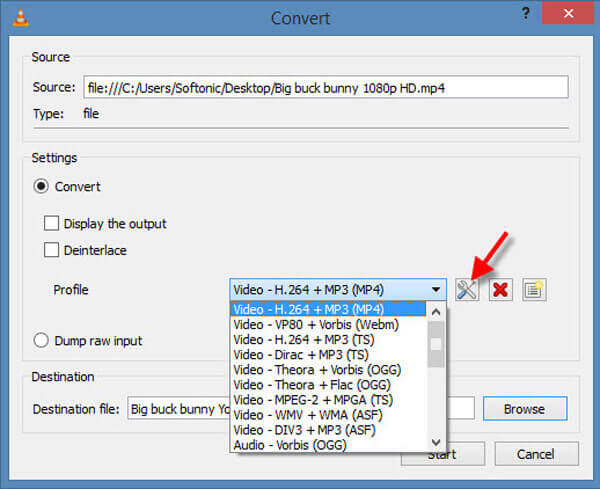

- How to use vlc media player how to#
- How to use vlc media player install#
- How to use vlc media player update#
- How to use vlc media player skin#
- How to use vlc media player software#
If you are using a Mac, you can press Command + ALT + S. If you are using a Windows version and want to screenshot the current image, you can press SHIFT + S. You can press the specific keys to quickly take snapshots in VLC. When you have the need to take a VLC screenshot, you can simply click on the snapshot icon.īesides the 2 methods above, VLC also offer shortcuts for taking snapshot. By doing so, you can add some additional icons including a quick screenshot icon in the playback control area. While the video playing, click View on the menu bar and then select the Advanced Controls option from the drop-down list. You can also arise a quick snapshot icon to take screenshots in VLC. The VLC screenshot will be saved in PNG format by default. That means you have made a screenshot successfully. When you are playing a video with VLC, you can click Video on the top menu bar and then choose Snapshot or Take Snapshot option to screenshot the current image.Īfter the VLC screenshot, you can see a small thumbnail of the capture in the upper left corner of the window. You can use the 3 methods below to take snapshots in VLC. VLC media player provides a simple way to take a screenshot of the video you are playing and save it as an image file.
How to use vlc media player how to#
How to Take Screenshots in VLC Media Player How to Screenshot Computer Screen with Screen Recorder From here, you can select the toolbar items you want to modify and choose from the different options available for it to customize its appearance to your liking. To do this, click Tools > Customize Interface. VLC Interface Customizationīesides using custom skins, VLC also lets you customize the interface by modifying the position of the toolbar buttons.
How to use vlc media player skin#
Then, choose the skin you've downloaded to apply it. So if you're bored with the basic interface and theme of the player, you can download a new skin from the VLC skin website and use it on your system.įor this, after you've downloaded a theme, go to Tools > Preferences and select the Use custom skin radio button. To access VLC add-ons, go to Tools > Plugins and extensions, and search for an extension using the search box. Simply put, VLC add-ons are all sorts of programs, like extensions, skins, and playlist parsers, among others, which help you extend VLC's functionality.įor instance, you can use the VLSub VLC extension to download subtitles for movies from OpenSubtitles and play them along while watching movies. While VLC should suffice the needs of most individuals in its default state, for those who want to get more out of the player, there are add-ons. To uninstall VLC media player, run: sudo zypper rm VLC
How to use vlc media player install#
Then, install the VLC package as follows: sudo zypper mr -r VLC Available options include Tumbleweed, Leap_15.0, and Leap_42.3. Remember to replace in the command with the version you're running.

But before that, you'll have to add the VLC repository: sudo zypper ar VLC You can install VLC on openSUSE using Zypper. If you're using Arch Linux or Manjaro, both of them already contain the VLC package in their official repositories, so you can install VLC by simply running this command: sudo pacman -S vlc When you want to uninstall VLC, you can do so using: sudo dnf remove vlc
How to use vlc media player update#
Then, update your system's package list and install VLC as follows: sudo dnf update Sudo dnf install $(rpm -E %fedora).noarch.rpm sudo dnf install $(rpm -E %fedora).noarch.rpm To install VLC on Fedora/CentOS or any other RHEL-based distro, you'll have to first enable the Free and Non-free RPM Fusion repositories. For this, open the terminal and run the following command: sudo apt install vlcĪt any point in the future, if you wish to uninstall VLC, run: sudo apt remove vlc On Ubuntu or Debian-based distros, you can use the APT package manager to install VLC. So depending on which Linux distro you're using, follow the steps below accordingly to get VLC on your machine. Using the default package manager happens to be the most obvious choice for many Linux users. And much like any other software, there are different ways to install VLC on all of these different distros.

VLC is supported by a number of Linux distros. Install VLC Media Player Using a Package Manager
How to use vlc media player software#
However, since software installation on Linux can be intimidating to some, here's a guide to simplify installing VLC Media Player on Linux. If you've been a VLC user on Mac or Windows and recently switched to Linux, or if you've been using some other media player on your Linux machine and are interested in trying out VLC after hearing about all its goodness, the first step is to install VLC on your computer. VLC is a free and open-source media player that supports a wide range of audio and video formats and encoding methods.


 0 kommentar(er)
0 kommentar(er)
